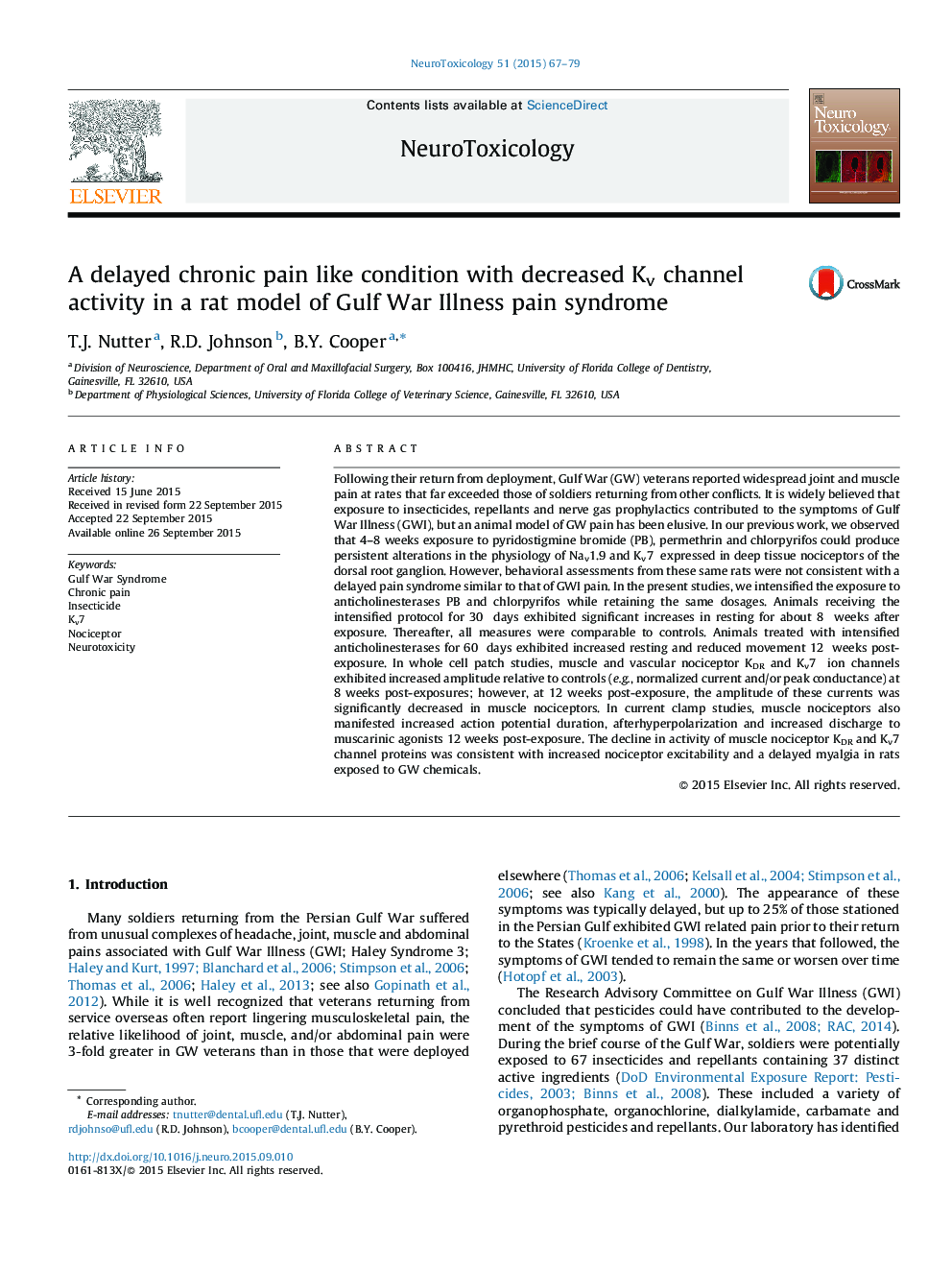| کد مقاله | کد نشریه | سال انتشار | مقاله انگلیسی | نسخه تمام متن |
|---|---|---|---|---|
| 2589467 | 1562043 | 2015 | 13 صفحه PDF | دانلود رایگان |
• Rats were treated 60 days with permethrin, chlorpyrifos and pyridostigmine bromide.
• 12 weeks after treatments, resting increased and movement decreased suggesting a delayed myalgia.
• KDR and Kv7 activity decreased 12 weeks after exposure.
• Muscle nociceptors exhibited increased action potential duration and after hyperpolarization.
• Muscle nociceptors exhibited increased discharge to a muscarinic agonist.
Following their return from deployment, Gulf War (GW) veterans reported widespread joint and muscle pain at rates that far exceeded those of soldiers returning from other conflicts. It is widely believed that exposure to insecticides, repellants and nerve gas prophylactics contributed to the symptoms of Gulf War Illness (GWI), but an animal model of GW pain has been elusive. In our previous work, we observed that 4–8 weeks exposure to pyridostigmine bromide (PB), permethrin and chlorpyrifos could produce persistent alterations in the physiology of Nav1.9 and Kv7 expressed in deep tissue nociceptors of the dorsal root ganglion. However, behavioral assessments from these same rats were not consistent with a delayed pain syndrome similar to that of GWI pain. In the present studies, we intensified the exposure to anticholinesterases PB and chlorpyrifos while retaining the same dosages. Animals receiving the intensified protocol for 30 days exhibited significant increases in resting for about 8 weeks after exposure. Thereafter, all measures were comparable to controls. Animals treated with intensified anticholinesterases for 60 days exhibited increased resting and reduced movement 12 weeks post-exposure. In whole cell patch studies, muscle and vascular nociceptor KDR and Kv7 ion channels exhibited increased amplitude relative to controls (e.g., normalized current and/or peak conductance) at 8 weeks post-exposures; however, at 12 weeks post-exposure, the amplitude of these currents was significantly decreased in muscle nociceptors. In current clamp studies, muscle nociceptors also manifested increased action potential duration, afterhyperpolarization and increased discharge to muscarinic agonists 12 weeks post-exposure. The decline in activity of muscle nociceptor KDR and Kv7 channel proteins was consistent with increased nociceptor excitability and a delayed myalgia in rats exposed to GW chemicals.
Journal: NeuroToxicology - Volume 51, December 2015, Pages 67–79
